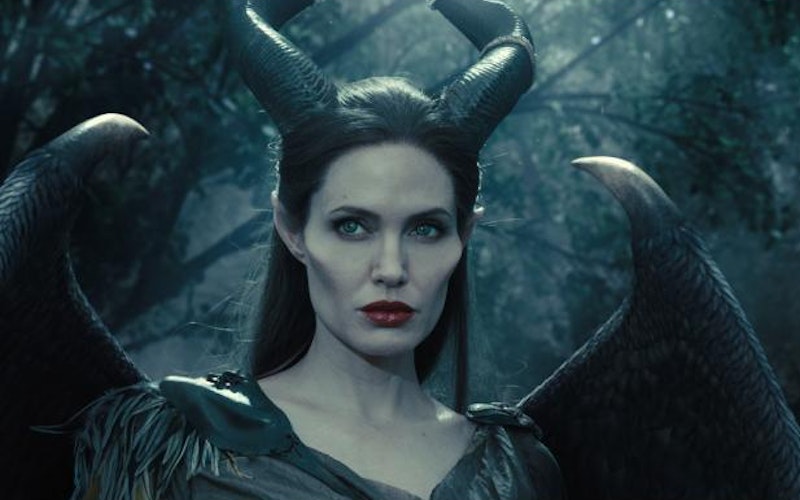
Movies
Maleficent's Nuanced Understanding of Evil
In 1959’s Sleeping Beauty, Disney offered an iconic personification of evil: Maleficent, the spurned fairy who bestows a curse on a newborn princess. The new Maleficent, told from the sorceress’ point of view, gives that evil some background and nuance. In the process, the story becomes less a fairy-tale version of good and evil – a tale of black and white – and something more akin to the human sinfulness we all know.
Eleanor Audley provided the devilishly regal voice of the original, animated Maleficent; here, we get Angelina Jolie in the flesh. It’s a grand performance, not only for the way it nods to Audley’s theatricality, but also in how it offers a fuller, psychological portrait of a good fairy gone bad. I won’t give away plot details, except to say that in this Wickedification of the tale, Maleficent is depicted as a casualty of patriarchal oppression – a trauma victim, in fact. Evil here is borne of – then visited upon – rapacious men.
This revision is compelling both as a corrective to Disney culture, in which Prince Charming is usually the ultimate goal, and as a reference to Giambattista Basile’s 17th-century version of the Sleeping Beauty tale, which includes an instance of rape. Yet something else occurs when the story is structured in this way: by repositioning Maleficent’s evil as a response to her own traumatic experience, the movie offers an instructive portrait of the insidious circularity of sin.
Evil can annihilate, but it can also breed. Once it’s unleashed, it tends to spread. The Belgic Confession describes it this way, in discussing the doctrine of original sin: “Sin constantly boils forth as though from a contaminated spring.” Maleficent is that spring. When we first meet her, she’s a protective figure, a guardian of sorts over the magical Moors, which are located just outside a human kingdom. After the humans encroach on the Moors and Maleficent suffers a terrible loss, she responds by reimagining herself as a powerful, vengeful sorceress. She has suffered evil; she will deliver evil in return.
Maleficent is a victim, a product and a perpetrator of evil.
First-time director Robert Stromberg and his filmmaking team envision this transformation in ingenious ways, from Jolie’s costuming (which begins to more obviously evoke the look of 1959’s Maleficent) to the special effects. When the refashioned Maleficent returns to the Moors, she drags a literal dark cloud behind her, casting a giant shadow over the formerly bright and cheery land.
Maleficent’s hatred for her attacker spreads like a weed – indeed, like the thorny brambles she conjures to surround the Moors. When a baby princess is born in the human kingdom, Maleficent sees an opportunity for revenge. Afterwards, as the movie’s voiceover narration explains, “She reveled in the sorrow that her curse had brought.” This is a striking portrait of the consumptive nature of evil, somewhat similar to the way Gollum, of the Lord of the Rings saga, is swallowed whole by his sin.
It’s also a helpful way of thinking about total depravity, which the Belgic Confession also addresses and which TC contributor Derek Rishmawy nicely nuances here. Though some have bemoaned Maleficent as an attempt to excuse villainy, it strikes me as a theologically sound way of depicting how evil actually functions in the real world: not separate from “the good,” but wrapped up right inside of it, threatening to overwhelm it, leaving only – as the Belgic describes – “small traces” of the “excellent gifts” we received from God.
Maleficent then, is a victim, a product and a perpetrator of evil. But aren’t we all, to various degrees? It’s interesting that although the movie locates sinfulness in Maleficent’s heart (and in the heart of the man who first wronged her), it also acknowledges evil as an outside force. She tries to revoke her curse at one point, proclaiming “Let it be no more,” but the spell is an awful power unto itself. This pure evil is even visualized later in the film, as a growing green light that leads the princess Aurora (Elle Fanning) to a hidden room of spindles, and to her fate.
If you need your fairy tales to have a clear-cut villain, there it is.
Topics: Movies